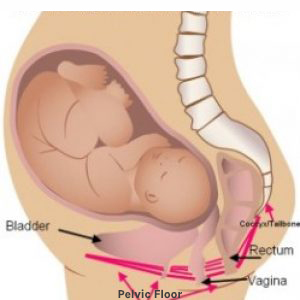What's All This Talk About Pelvic Exercises?
Posted by Lisa Akins on 30th Sep 2020
I am sure you have heard it mentioned by many, from your midwife, doula and every other mum on the planet 'You must strengthen your pelvic floor!' but what is a pelvic floor?
The pelvic floor is the set of muscles resembling a hammock located at the base of your pelvis which supports your uterus, bladder and bowel – making sure they stay in their rightful places. When weakened, your pelvic floor will struggle to keep stool and urine in and you might experience leaking - especially when exercising, coughing, sneezing or laughing. This is often known as stress incontinence. Your pelvic floor muscles are placed under great strain during both pregnancy and birth and become stretched and weak - this is mainly due to pressure from the growing weight of the baby. This can do real damage to your pelvic floor. Still a bit unsure, take a look at the diagram below:

What to do to strengthen your pelvic floor?
There are two main methods recommended by midwives and healthcare professions these include pelvic floor (Kegel) exercises and pelvic floor toning. Kegel exercises can be performed during pregnancy and 6 weeks after a natural birth (if you have had a caesarean section you will have to wait until you have completely recovered and you have been cleared by your doctor). Kegel exercises often involve relaxing and contracting of the pelvic floor muscles and can be done almost anywhere at any time. These exercises can be very effective, yet many women find it difficult to know when they are correctly engaging their pelvic floor during exercise - it can also take a few months before improvements are noticed. The other method recommended to strengthen your pelvic floor is toning with a Sensatone from Body Clock, which is a discreet battery operated electrical device that uses a small and comfortable vaginal probe. The device then precisely passes very mild electrical impulses to the probe to contract and relax the muscles of your pelvic floor. A number of users have reported vast improvements within two weeks of using the device, it is no surprise that it is a multi-award-winning unit. Please note, this can not be used until after 12 weeks of pregnancy unless under medical supervision.
Will these methods work for me?
Give it a go and find out! Millions of women have already seen the benefits, join them and give it a go.
